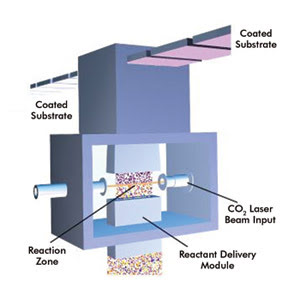Bringing down the cost of solar has many manufacturers looking at new materials and novel processes. NanoGram Corp. of Milpitas, Calif., specializes in a process called laser reactive deposition (LRD), which is used in manufacturing optical, electronic and energy products. Now the company is using the same process for manufacturing solar modules.

The technology produces a product called SilFoil, which implies exactly what it is – crystalline silicon deposited directly as a film. According to Kieran Drain, president and CEO of NanoGram, at about 35 μm, SilFoil is thicker than thin film. The advantage is that it uses 75 percent less silicon than multicrystalline cells, which makes the SilFoil modules less expensive than traditional ones based on silicon wafers. NanoGram expects module costs to be well below $1 watt-peak when manufacturing is at full scale in 2011.
The LRD process that the SilFoil technology uses was developed by the company over a period of about 12 years. Its original application was for manufacturing thick films of precision glass for optical telecommunications. The technique uses an optically flattened laser beam to fabricate critical process components. By combining that approach with other film-forming and film-processing technologies, the company is now producing foils of silicon for photovoltaic applications.
Currently under construction in Milpitas is a 5-MW pilot plant, which, according to Drain, is in the prototype stage but is expected to “validate the panels and robustness of process.” The plan is to complete the pilot by the end of 2009 and to be in full-scale production by the end of 2010. The plant is aimed at off-grid markets, Drain contends, but when it is at full-scale production, the plan is to market to solar farms as well as to residential systems.
In June 2008, the US Department of Energy recognized NanoGram’s photovoltaic process with an Energy Innovator Award.